Le Tourne, Gironde, Nouvelle-Aquitaine 作者: 来源: 发布时间:2021-09-25
I.Population and Area
Total Area: 2, 53 km2
Population in 2017: 812
Population Density: 321 /km2
Histogram of demographic change
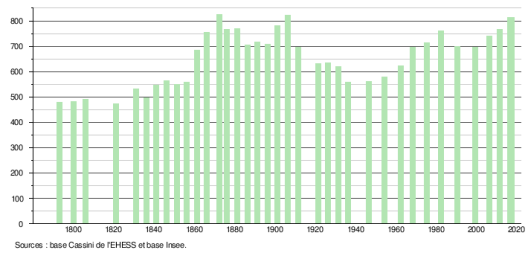
II.Natural Geography (environment and resources)
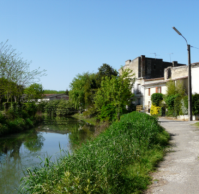
Le Tourne is a town in southwestern France, located in the Gironde department, in the Nouvelle-Aquitaine region.
Geography:
Municipality of the urban area of Bordeaux and its urban unit, Le Tourne is located in the natural region of Entre-deux-Mers. The nearest towns are Portets, about 3 km away, Baurech ~ 3 km, Ayguemorte-les-Graves ~ 4 km, Cambes ~ 4 km, Isle-Saint-Georges ~ 4 km, Saint-Selve ~ 5 km, Tabanac ~ 1 km, Saint-Caprais-de-Bordeaux ~ 6 km, Arbanats ~ 6 km, Saint-Médard-d'Eyrans ~ 7 km, Langoiran ~ 0.5 km, Lestiac-sur-Garonne ~ 8 km, and Quinsac about 8 km.
Hydrography:
The town is bordered by the Garonne to the south-west acting as a natural barrier with the town of Portets and by its tributary the Grand Estey to the south-east which also acts as a natural barrier with the town of Langoiran until their confluence.
Communication routes and transport
The town of Tourne is served by lines 501 and 5011 of the TransGironde bus network. A bus line to Anatole France college in Cadillac (Gironde) also stops in the town.
Le Tourne also has a carpool area near the D10 towards Bordeaux.
Sources : https://www.letourne.fr/decouvrir-le-tourne/
https://www.letourne.fr/
III.Economy
Employment rate (%): 79.1 (2017)
Average income per family (€): 2121 net per month (25 452 net per year)(2018)
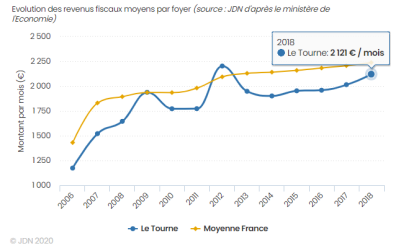
Evolution of average monthly net wages per family
Sources : http://www.journaldunet.com/business/salaire/le-tourne/ville-33534
https://www.insee.fr/fr/statistiques/2011101?geo=COM-33534
IV.Industrial Characterisitics
The town is located in the geographical area of production of premiers-Côtes-de-Bordeaux (dry white wines), Côtes-de-Bordeaux-Cadillac (red wines) and Cadillac (sweet white wines), appellations of origin controlled from the Entre-deux-Mers vineyard. The whole region also produces reds, clairets, rosés, dry whites, sweet or sparkling under the names bordeaux and bordeaux-superieur.
V.Attractions
1.The Saint-Étienne church
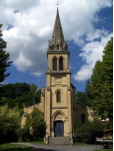
The Saint-Étienne church, built during the nineteenth century in a neo-Gothic style, is characteristic of the Catholic religious buildings of the region at the time, sporting an essential “Donnet” bell tower.
2.The Tramasset du Tourne
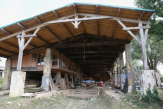
The Tramasset du Tourne construction sites, also identified for a study relating to the industrial heritage of the Gironde, are also subject to protection as historic monuments.
The association which has taken over, on the historic site, the activity of the wooden naval framework workshop, builds and restores fishing, transport or pleasure boats, longlines, barges or ketches, such as L'Audiernais, the Deux Frères, the Albarquel or the Leenan Head.
The old Tramasset shipyard existed since 1837. It was part of the 6 shipyards of Tourne and Langoiran which built skiffs, spinners, coureaux, barges and fir trees during the period when the wooden boats provided transport on the river. Garonne. This flourishing business employed up to 40 workers in the 1930s. In decline since the early 1960s, Les Chantiers Tramasset was finally closed in 1985 and abandoned. The town hall of Tourne then decided to buy the buildings and the Les Chantiers Tramasset association was created in 1997 to bring these historic places back to life. The site was classified in the inventory of Historic Monuments in 2008.
The association of the same name, created in 1997, has taken over this heritage site on the banks of the Garonne, abandoned since 1985.
A place of heritage transmission
Recognized as a space for social life, the association also aims to be a space for heritage mediation. Its tourist approach makes it possible to bring consistency between its missions of transmission of know-how, of the cultural heritage linked to the river, while promoting the activities of the association.
As an extension of the ADULT-CHILDREN WORKSHOPS (next date: Sat May 18, from 2 p.m. to 4 p.m. at the work sites) and PEDAGOGICAL ACTIVITIES AT SCHOOLS, the association offers TOURIST VISITS throughout the year!
- HERITAGE MEDIATION AREA
You will discover permanent and temporary exhibitions which will allow you to discover the craft and river heritage.
Educational and fun activities will also be offered.
Opening scheduled for late June.
The visits
These visits can take several forms:
-FREE VISITS
It is possible to discover the Tramasset Chantiers site through an autonomous route! A booklet (2 €) will inform you about the main historical and cultural elements. Monday to Friday, 10 a.m. to 5 p.m.
- GUIDED TOURS (from 9 people or fixed price 45 euros).
Visit of the historic ports of Langoiran-Le Tourne, the heritage site of the shipyard and the shipyard mediation area.
5 € / person - 1h15 visit
By appointment on 05 56 67 61 69 or by email: asso@chantierstramasset.fr
- RECEPTION AND SMALL CATERING AREA
Opening scheduled for late June.
Contact: asso@chantierstramasset.fr - 05 56 67 61 69
20 esplanade Josselin 33550 Le Tourne
To find out more about the location and the association, visit: http://chantierstramasset.fr/
Sources : http://www.letourne.fr/decouvrir-le-tourne/histoire-et-patrimoine/les-chantiers-tramasset/
VI.History
A brief history of the coat of arms
In our minds, the coats of arms are linked to an ancient phase in history: they are linked to the Middle Ages, its lords and its feudal castles. In their most usual form, these signs of recognition actually relate to an individual or his lineage and are assembled on the field of a shield that evokes the shield of Lancelot or Ivanohé.
It is in fact considered that the coat of arms became widespread around the 10th or 12th century to allow knights made anonymous by their harness (chain mail, helmet, armor, etc.) to identify themselves on the battlefields. Very quickly, they ceased to be the exclusive attribute of the warrior aristocracy to be adopted by the aristocracy of less military merit and by the bourgeois more or less ennobled by the purchase of offices, land or accession to the dominant strata of society. The great ecclesiastical institutions and the municipalities, which emerged at the turn of the 12th and 13th centuries, also did not fail to affirm their social and political position by adopting coats of arms.
The parishes, on the other hand, did not have one, but the communes which overlap with the parishes of the former regime manifested from the first decades of the 19th century a certain propensity to acquire coats of arms which enabled them to assert their identity; the law of April 5, 1884 allows them to establish them as they wish.
This is how heraldry is found to have been considerably enriched under the different republics and that the smallest municipality can, like a prince of blood or like the largest cities in France, display on its letter paper or on its street signs. a tailor-made coat of arms.
Furniture (object signs or animal and human figures) and enamels (metal: gold or silver color and colors: mouth = red, azure = blue, sand = black, green = vert, gray-brown = purple, orange-brown = tanned) allow an infinite variety of combinations of images which make heraldry a world teeming with great plastic richness which can also be seen as a gigantic collection of charades.
The tidal bore
Several hundred people come to see him as he passes. Some people compare it to a tsunami, it is the cause of many of our ills, it moves us a little more each time it passes, the eddy it causes puts the mud in suspension, it's dirty, it is muddy, it contributes to the erosion of the banks but despite everything it is a star!
The tidal bore, an Occitan word passed into French, is a phenomenon of sudden elevation of the water in a river or estuary caused by the wave of the rising tide during high tides. It occurs in the mouths and lower reaches of some rivers when their current is thwarted by the flow of the rising tide. The most spectacular tidal bores can be seen at the mouths of the Qiantang (China), the Severn (England) and the Amazon (Brazil).
This phenomenon is characterized by a wave, more or less high, which goes up the course of the river and whose power varies according to the height of the tide, the flow of the river at that time and the topography (depth and width of the bed. , sandbanks, meanders, declivity etc.).
The development of the river can make it diminish or disappear, as for the Seine. It’s a wave, breaking or not, moving upstream, usually increasing as its bed narrows.
In pretty words
Tidal bore, the moon wave
Extract from "Tidal bore, the lunar wave", Antony colas, Ed.Yep
Mascaret_couvAegir, baan, barre, benak, bono, boron, flot, guanchao, pororoca or repoul: so many names to designate the tidal bore, that palpitation of great watchmaking that is the tide, which manifests itself here and there in a small twenty countries.
And among the 78 rivers affected by this phenomenon, still poorly understood by the scientific community, France, with its many estuaries and its formidable tidal amplitudes, stands out as a hotbed of this most predictable natural spectacle. Unlike the lightning we see before we hear it, the tidal bore can be heard before it is seen.
The tidal bore is the untold story of a wave, which can ascend shallow rivers for several hours, a rare and fragile result between the calm of the downdraft and the tumult of the rising tide. Formerly, the Seine suffered a colossal bar, which caused shipwrecks and drownings.
In Gironde and in the Bay of Mont St-Michel, it propels a nice breaking wave, which can attract hundreds of sliders of all stripes and thousands of spectators. And from there our borders, it is a world tour which passes by our British neighbor, by the high latitudes of Canada and Alaska, by the fluvial Himalayas that is the Amazon basin and finally by the terrifying and unexpected spurts of Asia.
The old station and the Bordeaux-Cadillac tram line
At the entrance to the village, on the road to Bordeaux, is the Tourne-Langoiran tram station. This station was the most important between Latresne and Cadillac.
Today, the building serves as a school canteen and rehearsal space for the Musiques Lab association.
Inaugurated in April 1897, the Bordeaux-Cadillac Tramway was a great success from the outset. During the first year of operation, 364,982 people were transported. The traffic continued to grow to reach a maximum of 494,949 passengers carried in 1902. Having survived the First World War, he did not see the second because in 1933 a bus service was established. It competed strongly with the tram, considerably reducing traffic. Moreover, the cost of modernization being too high, it was decided to close the line in June 1935.
The tram had caused the death of river transport on the Garonne, and itself was replaced by road transport.
It took about 2 hours to travel the 30 km of the line. It took approximately the route of the current RD 10 and had 24 stops. The 5 daily trains were supplemented by specific trains on Sundays and public holidays. The theater train left Bordeaux at 12:30 am and brought spectators back to their homes.
Thirteen locomotives transported passengers and goods and bore the names of the rivers encountered on the line (Pimpine, Euille, Gaillardon, Artolie, Laubès and Garonne).
Today, only 7 stations (Latresne, Camblanes, Esconac, Tabanac-Rouquey, Le Tourne, Lestiac and Paillet) remain out of the original 14.
Sources: http://www.letourne.fr/decouvrir-le-tourne/histoire-et-patrimoine/les-armoiries-du-tourne/
http://www.letourne.fr/decouvrir-le-tourne/histoire-et-patrimoine/le-mascaret/
http://www.letourne.fr/decouvrir-le-tourne/histoire-et-patrimoine/lancienne-gare/
VII.Other information
September 26, clean up nature:
Appointment on Saturday September 26 with your gloves and your masks at 10 am in the park of the town hall for a 2 hour walk in the village.
This first edition is labeled Ocean Initiatives.
Why participate?
TO PROTECT
THE ENVIRONMENT
An Ocean Initiative is a concrete action to protect the environment while having a good time with family, friends or with new people.
TO TAKE
CONSCIOUSNESS
Participating in an Ocean Initiative makes it possible to become aware of the problem of aquatic waste and to raise awareness among those around it, using the educational tools provided by Surfrider.
TO BE PART
OF THE SOLUTION
The Ocean Initiatives allow Surfrider to influence laws and reduce waste at source, by relying on the participation of volunteers and on the information collected on waste.
Theater Leisure Culture
Description:
For 30 years this tournament association has been organizing: outings and shows in major venues in Bordeaux (Theater, Casino, Fémina, Pin Galant, etc.), 1 trip abroad (once a year), 1 outing of 3 days in France , 1 or 2 day entertainment, the programming of a play per year at the Moulin Carreyre room, 1 tea dance. The aim of the association is to allow as many people as possible to go out at a lower cost.
Contacts:
Jacqueline Texier / 05 56 67 32 41
Annick Carsoulle / 05 56 67 39 22
Festival Committee
Description:
Organization of parties and events at Le Tourne. The organization of festive, cultural, artistic or educational events, logistical support, in harmony with the various associations, municipal or inter-municipal; the association may also organize or help organize additional services, in order to add a plus, in the various organizations mentioned above; the association will also be able to provide logistical and human support to events organized by the municipality of le tour, after a decision taken by the board of directors
Contact: Stéphane Gras
06 19 66 65 44
stephanegras33@gmail.com
Arterre
Description:
Promote and raise awareness in a local dynamic with respect for the environment; reappropriation of artisanal, artistic and land know-how to create wealth: working together, socializing and having fun through concrete actions (artisanal and artistic production, recycling, organization of events, workshops, sharing of know-how
Route de Tabanac, 33550 Le Tourne
Tramasset sites
triangle logo for construction sites Description:
The association has invested in the former Tramasset shipyards. Since 1997, within this industrial wasteland, the association has undertaken to restore buildings and relaunch the shipbuilding activity through the restoration and construction of local heritage boats. The association, which is open to all residents of Tourne, is a place for meetings and exchanges between generations around maritime and river heritage.
Contact :
09 03 65 61 69 / asso@chantierstramasset.fr
website: www.chantierstramasset.fr
Sources: https://www.letourne.fr/le-26-septembre-nettoyons-la-nature/
https://www.letourne.fr/les-associations-du-tourne/
VIII.Contact information
Le Tourne town hall address :
2 chemin de peyroutic
33550 - Le Tourne
1st Saturday of the month: 9 a.m. to 12 p.m.
Mayor : Marie-Claude AGULLANA (Mandate : 2020-2026)
Mail: accueil@letourne.fr
Phone number: 05 56 65 01 20
Fax: 05 56 25 61 22
Website : https://www.letourne.fr/
